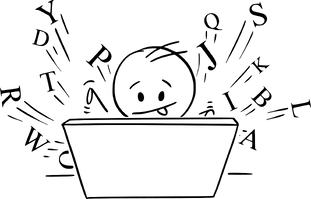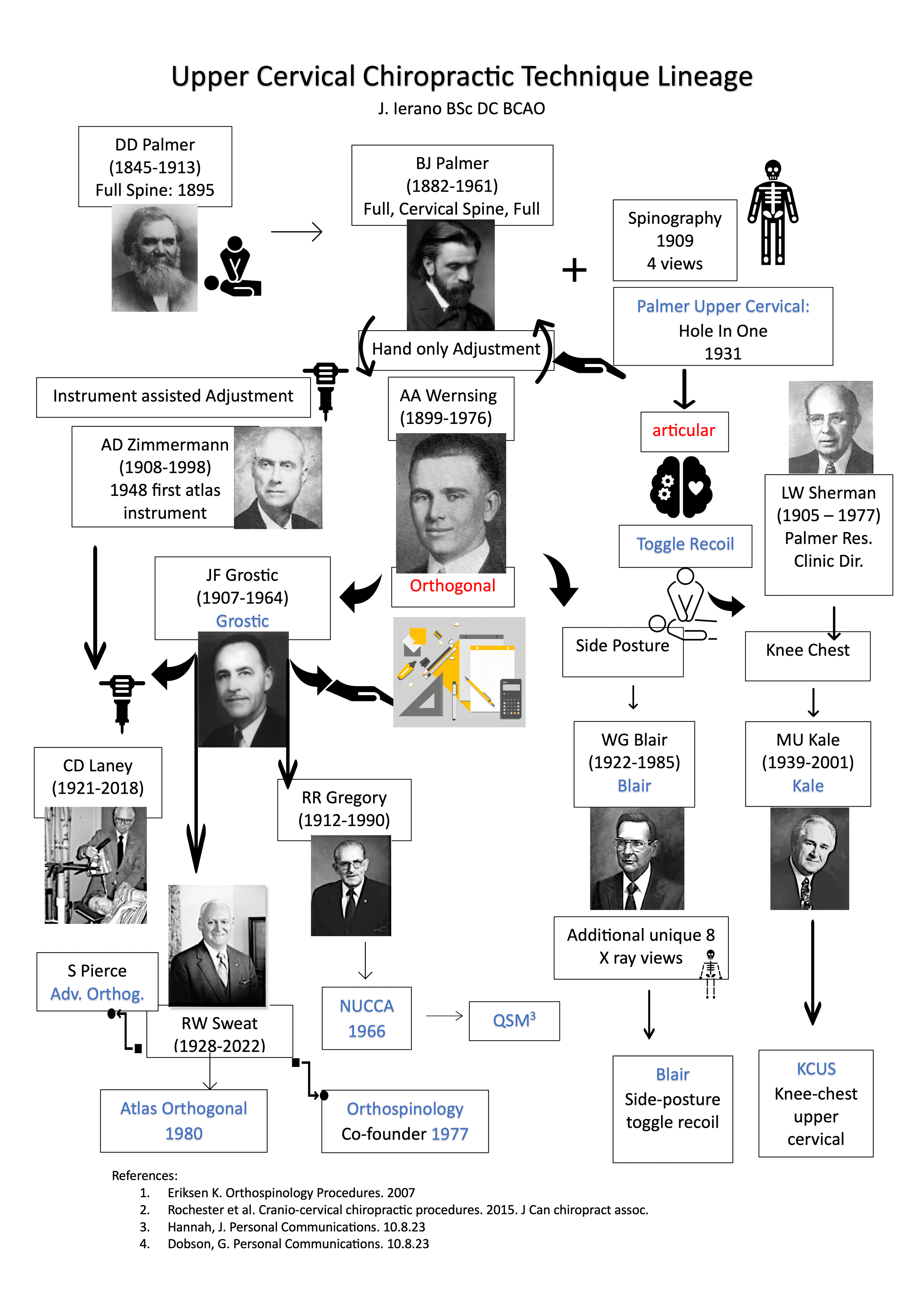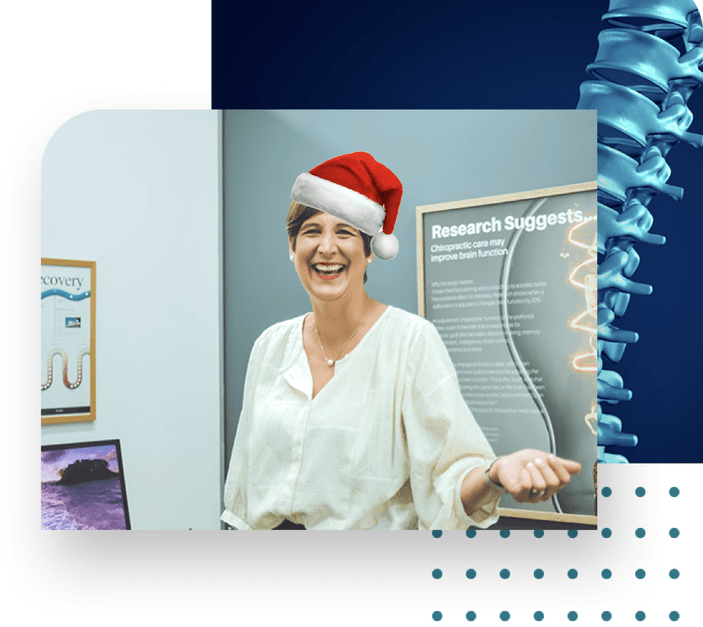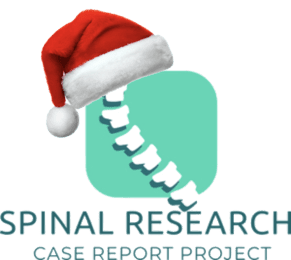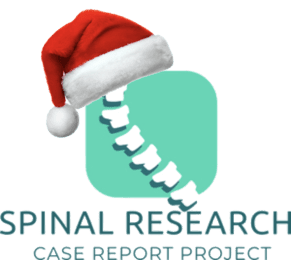'Don't let urgency consume all the energy you have.'
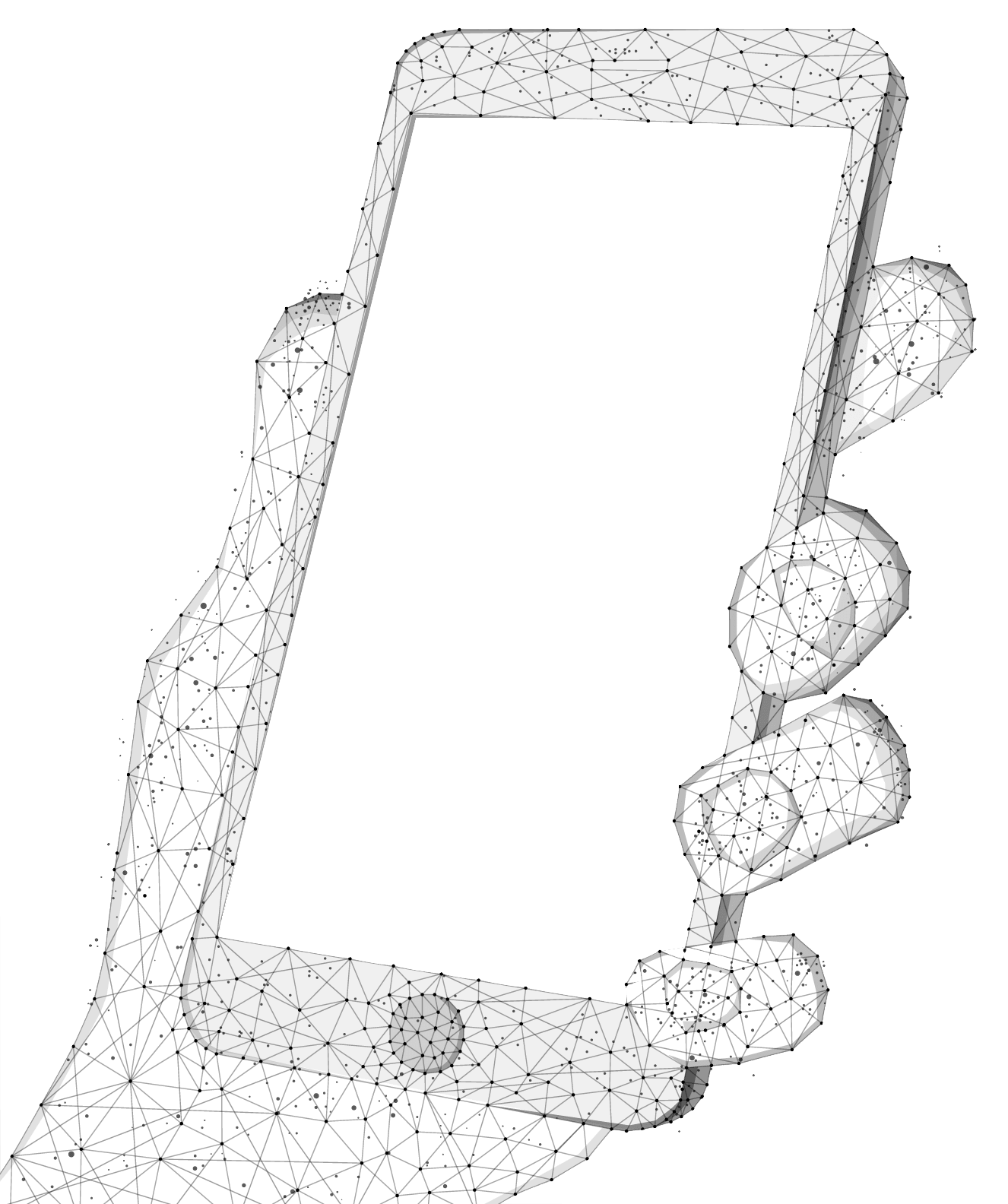
First Quarter 2024
(Jan to Mar)
Volume 4, Issue 3 (4.3)
There are bots & AI;
and then there is us
In memoriam: Dr Carl Hamilton
Summary: In 2007 Carl reached a milestone. He had practiced chiropractic and served the profession for 50 years.
With heavy hearts, we bid farewell to Carl Hamilton, founding member of ACA QLD, a cherished life member of ACA, and an inspiring mentor whose legacy of guidance and support touched many lives across Australia; our sincerest condolences to his family and friends.
Cite: Charlton KH. Dr Carl Hamilton. [In Memoriam]. Asia-Pac Chiropr J. 2024;4.3. www.apcj.net/Papers-Issue-4-3/#CharltonHamilton
In memoriam: Dr Gerry Clum
Summary: I miss him, of course. I’m sad that those just entering the profession on whose shoulders they stand will never get to know and appreciate him.
I worry for the profession without him being there watching out for us and the attacks on our principles.
He was just a good man and a good soul and our world seems so devoid of those attributes today. But I’m also happy for him as I have no doubt that DD and BJ and Galen Price and Sid and River and the Cleveland’s and Vint Logan and Herbert Reaver and Mac/Kitty Scallon and the rest of the gang were there to meet him and in perfect chorus echoed out: ‘Well done…good and faithful servant’.
Cite: Riekeman G. Gerry Clum. [In Memoriam]. Asia-Pac Chiropr J. 2024;4.3. www.apcj.net/Papers-Issue-4-3/#RiekemanClum
Cervical segment disruption, displacement, and dysfunction with potential to activate somatosensory reflexes: Radiological indications of components of the Vertebral Subluxation Complex
Narrative: We present a series of radiological findings related to disruption of cervical spinal segments.
These somatic anatomical sites of earlier physical disturbances are considered to have the potential to activate or re-activate noxious sensory insult and initiate somatosensory reflexes. These components comprise central elements of a vertebral subluxation complex (VSC).
The findings suggest that pathoanatomical segmental juxtaposition (displacement) and pathophysiological vertebral function (dysfunction) may activate noxious input to involve somatosensory, somato-autonomic, somato-somatic, somatovisceral and somatovascular reflexes.
Indexing terms: Chiropractic; Vertebral Subluxation Complex; Subluxation; Cervical; Radiography
Cite: Rome PL. Waterhouse JD. Cervical segment disruption, displacement, and dysfunction with potential to activate somatosensory reflexes: Radiological indications of components of the Vertebral Subluxation Complex. Asia-Pacific Chiropr J. 2023;4.2. apcj.net/papers-issue-4-3/#RWCervicalSubluxation
Proprioception in Chiropractic: Measuring tone with Chiropractic Neuro-Physiology
Narrative: Proprioceptors (mechanoreceptors) are found in the muscles, skin, tendons, ligaments and joints. Afferent fibres from mechanoreceptors converge segmentally on the dorsal horn of the spinal cord.
Proprioceptive testing for chiropractors should be performed on any patient who complains of disturbed balance or if there is a suspicion that equilibrium disturbances exist in the patient. Because postural and proprioceptive functions are so automatic they are often taken for granted even in the clinical setting.
If the patient walks onto the examination table, the doctor then looks for pain and its cause. But the cause of the problem may be discovered only when testing the patient while proprioception is active, or while the patient is moving. This tendency toward lack of awareness of the proprioceptive integrity in our patients is especially true if only a mild dysfunction exists that does not obviously interfere with gait and stability during locomotion. One of the more difficult tasks of the physician is to recognise not only the existence, but also the significance of slightly disordered postural mechanisms.
This paper focuses on the diagnosis and adequate Chiropractic treatment of an essential neuromuscular problem in human beings and expands the concept that a breakdown in proprioceptive communication may have a role to play in dysfunction and disease. Part of this discussion will be the traditional chiropractic hypothesis that irritation and dysfunction within the somatic structures (and other soft tissues) of the body might be a contributory factor to neural 'confusion' and hence homeostatic imbalance and physiological disorganisation.
Indexing Terms: Chiropractic; AK; Applied Kinesiology; proprioception; tone.
Cite: Cuthbert S. Proprioception in Chiropractic: Measuring tone with Chiropractic Neuro-Physiology. Asia-Pac Chiropr J. 2024;4.3. apcj.net/papers-issue-4-3/#CuthbertTone
Assessment clarifiers [The wide-angle lens]
Narrative abstract: Skilled palpation is a powerful assessment method for trained Chiropractors. There are times when a little finesse is needed to reduce the noise of other tissues and allow the doctor to make a more clear assessment.
Here I present several ‘clinical tricks’ that better isolate the segments and tissues I am assessing.
Indexing terms: Chiropractic; self reflection; clinical assessment; subluxation.
Cite: Masarsky CS. Assessment clarifiers [The wide-angle lens]. Asia-Pac Chiropr J. 2024;4.3. apcj.net/papers-issue-4-3/#MasarskyClarifiers
The upper cervical Chiropractic lineage diagram project
Narrative: At times something little and insignificant can get into our minds as clinicians and give as a reason to think a little more deeply about whatever it may be.
This is the case when I came to realise there is no given lineage of how upper cervical Chiropractic care came to be what it is today.
There are multiple independent stories, each favourable to one person’s particular recollections, but by and large they are isolated stories and disconnected from others.
I have commenced this small project to build a lineage based on what I have been able to retrieve from the literature.
It is a work in progress, which I present here, with the open invitation to readers with further detail they feel is relevant to please reach out to me so we can build a definitive lineage of this idea in Chiropractic.
Indexing Terms: Chiropractic, upper cervical; history.
Cite: Ierano J. The upper cervical Chiropractic lineage diagram project. Asia-Pac Chiropr J. 2024;4.3. apcj.net/papers-issue-4-3/#IeranoLineage
Updated 12 Jan 2024
Sacro Occipital Technique (SOT): Category Three: Predictability of Outcomes
Narrative: DeJarnette was a researcher, author, teacher and developer of the SOT systems method of Chiropractic. DeJarnette stated in his 1967 book Philosophy, Science and Art of SOT that:
‘Man is a segmental unit of a great many diversified structures and chemical elements, blended into one co-operative functional unit by the nervous system. This total segmental being is made to function through his muscular system’s response to stimuli. The framework is held together by ligaments, and all revolve around the central spinal column. Let this central column fail in any respect and the total is out of harmony and balance’.
Here I describe the pain and spinal patterns that clinically indicate an SOT Category Three and offer treatment approaches which I have found effective in practice to deliver predictable outcomes.
Indexing Terms: Sacro Occipital Technique, SOT; Chiropractic; SOT Category three; Piriformis muscle; Sciatica; Lumbar disc.
Cite: Getzoff H. Sacro Occipital Technique (SOT): Category Three: Predictability of Outcomes. Asia-Pac Chiropr J. 2024;4.3. apcj.net/Papers-Issue-4-3/#GetzoffSOTCat3
Dysponesis & the woman in transition: Diagnosis and NIP Management
Narrative: Dysponesis has been described as a pathophysiological state in which energy expenditure is inappropriately distributed, leading to interference with neurological processing. The consequences of this is an inability of the patient to appropriately regulate excitatory and inhibitory signals within peripheral points of the nervous system.
In turn this results in reduced productivity, altered emotional states, ideation and central regulation of organ systems, presenting a challenge to the Chiropractor for successful management. Due clinical diligence demands that a carefully integrated clinical care plan be customised to each patient in order to address the destructive impact of dysponesis on multiple body systems.
I provide a guide to the assessment of the female patient in transition with recommendations for clinical interventions where indicated.
Indexing Terms: Chiropractic, Clinical management; Dysponesis; Neuro Impulse Protocol.
Cite: Davies NJ. Dysponesis & the woman in transition: Diagnosis and NIP Management. Asia-Pac Chiropr J. 2024;4.3. apcj.net/papers-issue-4-3/#DaviesDysponesis
Social and professional involvements in, and contributions to, the Biological Sciences by Chiropractors: With other notable contributors to the Discipline
Narrative: The contributions to the health and healing. sciences made by members of the chiropractic profession are recognised here. It seems that too often chiropractic is regarded as a form of manipulation rather than as a profession.
There are however many contributions, scientific innovations, and clinical roles that have been and continue to be made by chiropractors.
Indexing terms: Chiropractic; Chiropractors; contributions.
Cite: Rome PL, Waterhouse JD. Social and professional involvements in, and contributions to, the Biological Sciences by Chiropractors: With other notable contributors to the Discipline. Asia-Pacific Chiropr J. 2023;4.2. apcj.net/papers-issue-4-3/#RWContributions.
Survival and growth:
Adversity makes us do better
Narrative: Chiropractors world-wide were shocked and dismayed with the shameful announcement from RMIT University that there would be no Chiropractic student intake in 2024 and the program, which will have lasted 50 years or so by the time it ends, will be taught out over the next 4 years.
While there has been little concern for staff as some will remain and happily teach students in the replacement program of physiotherapy and others will spend more time in their own practices, grave concern was expressed for those many potential students planning to submit their application to commence their studies with RMIT in 2024, and for the 4-years of students remaining. The profession has acted, knowing that these dear people are the future of Chiropractic.
The Australian Chiropractic College, based in Adelaide, announced a giant growth step to introduce an enlightened form of study from 2024 where students can commence where-ever they live, completing a year while they consolidate and then move to Adelaide to finish and graduate. It may be that further options emerge during 2024 and this is a sign of strong, positive growth rooted in adversity which can only be good for the discipline of Chiropractic.
The philosophical vacuum that long existed at RMIT has also been addressed and inspirational sessions have been delivered which were greatly appreciated by the student body. These will be ongoing and supplemented with others.
We also note the new WHO Benchmarks for Anthroposophic Medicine, which I see as a layer of whole-body thinking to sit across established healing disciplines. These Benchmarks provide a challenging backdrop for the WFC as it develops a belated set of Benchmarks for the training of Chiropractors.
If implemented properly, the WFC Benchmarks will sideline the destructive negativity of the UK’s GCC which refuses to accredit any chiropractic program that teaches what they consider ‘unorthodox’ ideas such as we see embraced as the focus of Anthroposophic Medicine.
We think the GCC is in for an awakening.
Indexing terms: Chiropractic; accreditation; education; Professional Identity; Future planning; Anthroposophic Medicine.
Cite: Ebrall P. Survival and growth: Adversity make us do better [Editorial]. Asia-Pac Chiropr J. 2023;4.2. apcj.net/Papers-issue-4-3/#EbrallJanuary24
Battles of a Chiropractic student
Narrative: Higher education can be a battle, and being a chiropractic student brings many.
Here I share my thoughts on the difficulties of students and new graduates finding their own identity within the chiropractic community due to the ever-growing health politics.
Indexing terms: Chiropractic; World Congress of Chiropractic Students, WCCS; Leadership; new graduate; student perspective.
Cite: Author withheld. Battles of a Chiropractic student. [WCCS]. Asia-Pac Chiropr J. 2024;4.3 URL apcj.net/papers-issue-4-3/#BattlesofaStudent
Reversal of Cervical Artery Stenosis and improvement in physical functioning in a 78-year-old stroke survivor under concentrated Chiropractic care: A Case Report
Background: A 78-year-old female presented for chiropractic care following a week long stay in hospital for multiple Transient Ischemic Attacks (Mini-strokes). She had been advised that more mini-strokes would very likely occur as her medical doctors could not adequately diagnose the source of any bleeding, of which there were likely several. This caused further health-related anxiety and difficulty with sleep.
Management: The patient undertook three five-day courses of concentrated Chiropractic care over the course of three months. During this time, a variety of Chiropractic adjustments were deployed alongside complementary therapies.
Outcomes: Notably, the forecasted repeat strokes did not occur, and arterial regeneration was achieved concomitant with regenerative chiropractic care.
Indexing Terms: Chiropractic; Subluxation; TIA; stroke; Cervical Artery Stenosis; concentrated care.
Cite: Kotlerman S, Martin A, Carter M, Postlethwaite R, McIvor C. Reversal of Cervical Artery Stenosis and improvement in physical functioning in a 78-year-old stroke survivor under concentrated Chiropractic care: A Case Report. Asia-Pac Chiropr J. 2024;4.3. apcj.net/Papers-Issue-4-3/#AverioStenosisReversal
Regeneration of severe ligament instability and improvement in symptoms of benign prostate hyperplasia in a 76-year-old male under concentrated chiropractic care: A Case Report
Background: A 76-year-old male patient presented for chiropractic care at the behest of his wife. He was healthy and active, however, upon examination, an extraordinary level of ligament instability was discovered in his neck. This level of dysfunction would ordinarily require urgent or surgical intervention.
Management: The patient undertook an initial 5-day course of concentrated chiropractic care, and completed a total of four courses of care over fifteen months utilising a variety of chiropractic adjustments and complementary therapies.
Outcomes: Due to presentation at a chiropractic clinic even when he was feeling ‘healthy’, appropriate care and activity restrictions were put in place before a catastrophic injury took place. Over the course of care, regeneration of severe ligament instability and improvements in benign prostate hyperplasia were achieved.
Indexing Terms: Chiropractic; Subluxation; TIA; stroke; Cervical Artery Stenosis; concentrated care.
Cite: Kotlerman S, Martin A, Carter M, Postlethwaite R, McIvor C. Regeneration of severe ligament instability and improvement in symptoms of benign prostate hyperplasia in a 76-year-old male under concentrated chiropractic care: A Case Report. Asia-Pac Chiropr J. 2024;4.3. apcj.net/Papers-Issue-4-3/#AverioLigaments
Disclaimer
This journal is a professional journal by chiropractors for chiropractors. Readers not fully trained as a chiropractor should not act on their own on any information published in these pages and should always discuss their situation with their chiropractor.
